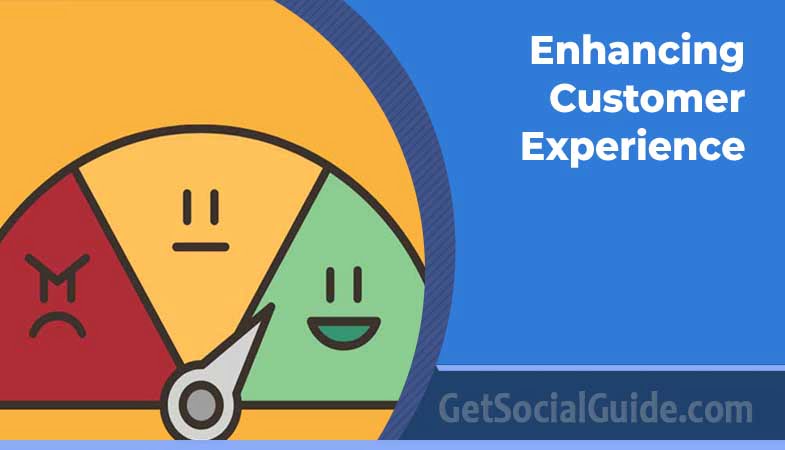Strategies For Enhancing Customer Experience
E-commerce has seamlessly integrated into our daily lives, offering the convenience of shopping from the comfort of our homes. Consumers now expect flawless and gratifying online shopping experiences. To thrive in the fiercely competitive e-commerce landscape, businesses must prioritise enhancing the customer experience. In this discussion, we will delve into actionable strategies aimed at improving customer experience on e-commerce websites.

User-Friendly Website Design
The initial impression of your e-commerce website holds immense importance. A cluttered and perplexing design has the potential to drive prospective customers away. It is crucial to ensure that your website boasts a user-friendly interface with a clean layout, intuitive navigation, and mobile responsiveness. Features such as easily accessible search bars and well-organised product categories can significantly enhance the user’s journey.
Fast Loading Times
In a world where every second counts, sluggish-loading websites can be a major deterrent. Research indicates that customers tend to abandon websites that take more than a few seconds to load. Optimising your website’s loading speed involves measures like image compression, minimising server response times, and the utilisation of content delivery networks (CDNs).
High-Quality Product Images and Descriptions
The significance of visual content cannot be overstated. Customers heavily rely on high-resolution product images and comprehensive descriptions to make informed purchase decisions. Providing detailed images from various angles, along with comprehensive product specifications and sizing information, is paramount. Extensive presentations can assist B2B sales teams in captivating their audiences and establishing more efficient sales pipelines.
Streamlined Checkout Process
A convoluted and protracted checkout process can lead to cart abandonment. To address this, streamline the checkout process by offering guest checkout options, auto-filling shipping information, and providing various payment methods, including digital wallets and credit card options. It’s also crucial to transparently display shipping costs and estimated delivery times to prevent unpleasant surprises during the transaction.
Personalization
Personalization can significantly elevate the customer experience. Utilise customer data to recommend products based on their browsing and purchase history. Personalised emails and product suggestions can make customers feel valued and increase the likelihood of repeat business.
Responsive Customer Support
Prompt and effective customer support is indispensable in e-commerce. Offer multiple channels for customer inquiries, such as live chat, email, and a dedicated customer support phone line. Ensuring your support team is well-trained and capable of efficiently resolving issues is essential.
Secure Payment Options
Security remains a paramount concern for online shoppers. Invest in robust security measures, including SSL certificates and secure payment gateways. Display trust badges and security seals prominently on your website to reassure customers that their personal and financial information is safe.
Hassle-Free Returns and Refunds
Clarity and simplicity in your return and refund policies are key. Implement an easy-to-follow returns process and communicate it clearly to your customers. A hassle-free return policy can cultivate trust and encourage hesitant customers to make a purchase.
Mobile Optimization
Given the increasing prevalence of smartphone usage in online shopping, optimising your e-commerce website for mobile devices is crucial for a successful SEO strategy. Ensure that the mobile version of your site is responsive, easy to navigate, and loads swiftly on various screen sizes. This not only enhances user experience but also improves your website’s search engine rankings and overall visibility.
Continuous Improvement
Ultimately, the journey of improving customer experience is ongoing. Regularly collect feedback from customers through surveys, reviews, and social media platforms. Utilise this feedback to identify pain points and areas for improvement, then iterate on your website and customer service accordingly.
Conclusion
In the fiercely competitive realm of e-commerce, delivering an exceptional customer experience is pivotal for success. By focusing on user-friendly design, rapid loading times, top-notch content, personalization, responsive customer support, and other strategies as mentioned above, you can establish a shopping environment that keeps customers returning for more. It’s essential to remember that a satisfied customer not only becomes a loyal one but can also become a brand advocate, attracting new customers through positive word-of-mouth.




A very nice article very great an article wonderful to see
A very nice article very great an article wonderful to see